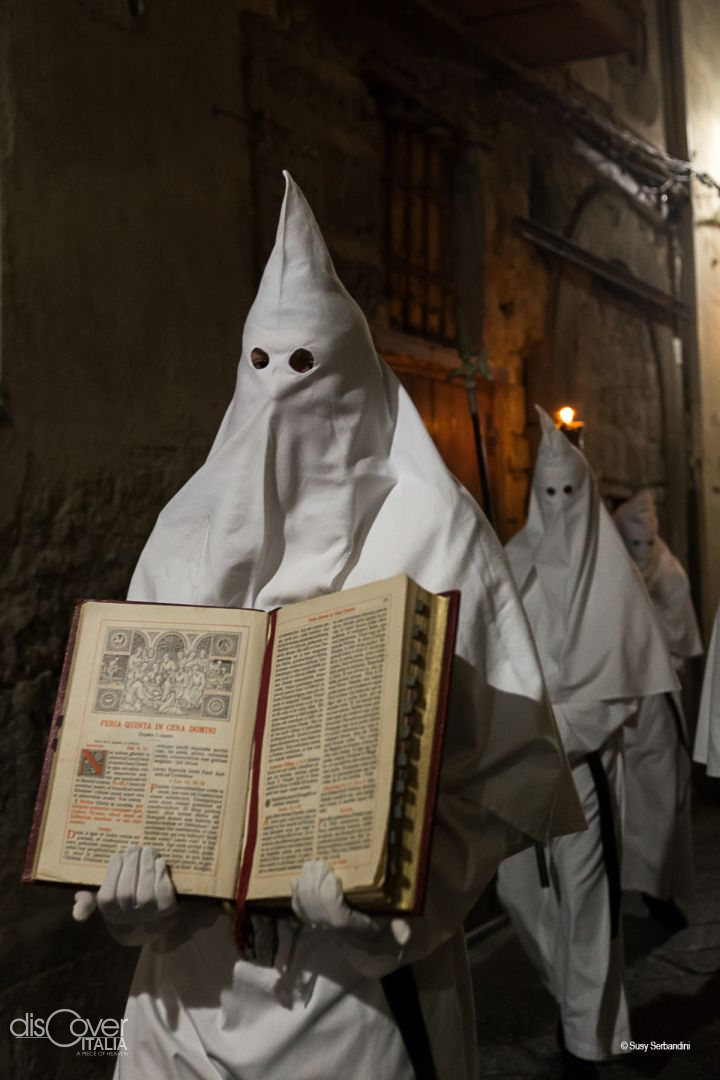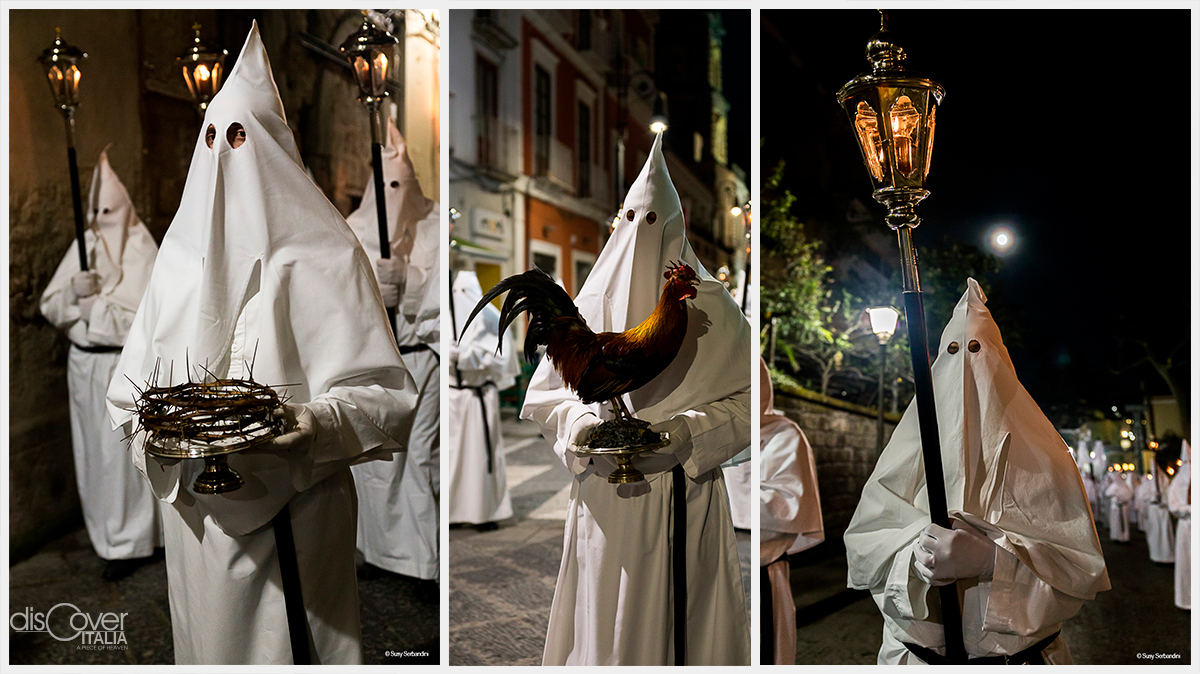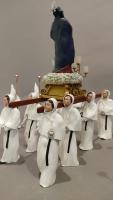

They are many and they are wearing white tunics, stopped by black belt of Augustinian inspiration, hence the name “cinturati” (“cintura” means “belt”), the name by which they have been known for centuries, in other words the members of the Venerable Archonfraternity of Santa Monica. They are all hooded.
They walk at a slow pace, solemn, bringing the image of the Madonna Addolorata (Virgin of Sorrow) of which they want to symbolise the search of Jesus in the Sepulchres set up in the city churches. They carry torches and lamps to light up the way, while the band plays the funereal hymns underlining the drama of the remembrance.
The White Procession is animated by five hundred participants. It parades through the streets of the centre of Sorrento on Good Friday, from three o’clock in the morning to the first lights of dawn, opening a day strongly evocative and full of suggestions, both for Sorrento people who live it with great intensity from the very beginning of the long and careful preparation, and for the guests coming from all over the world to share the different and emotional moments.
When it is dark again in the evening, the crowd gathers again silently behind the Cathedral, near the Chiesa dei Servi di Maria, historic siege of the Venerable Archconfraternity of Death. The band plays Chopin’s funereal hymns while from the church the brothers, with tunics and black hoods, firs distinctive element of the Black Procession of Dead Christ. The black standard of the confraternity is accompanied by the song of the Miserere, with which they implore the forgiveness of their sins. 
The hooded light up the night with torches and lamps in their solemn march through the streets of Sorrento, between two lines of a silent and moved crowd. They carry in processions the Mysteries or Martyrs, which are the signs of the Passion and the Crucifixion of Christ.
 Some of them carry ropes and lashes, others bring te image of the Virgin of Sorrow, who found her Son death.
Some of them carry ropes and lashes, others bring te image of the Virgin of Sorrow, who found her Son death.
An eighteenth-century wooden statue represents it.
The author is anonymous. Sorrento people are strongly devoted to that statue, which is the heart of the Good Friday Black Procession.
A choir event, integral part of Sorrento identity for more than five centuries and still strongly felt by the youngest.
The first rites of the Holy Week in Sorrento already took place in the second half of the fourteenth century, when the members of the ancient Confraternita dei Battenti (people beating themselves) di Sant’Antonio flagellated themselves as they did in Spain as well. But the roots of the actual processions date back to the sixteenth century, although they were “copied” as well from the religious events of the Spanish Semana Santa.
At the beginning, only men of the confraternity and the brothers could parade on Holy Thursday to visit the Sepulchres in the churches of Sorrento, then during the Spanish viceroyalty, the influence of the Jesuits transformed them as they are today. After the removal of the brothers in 1806, during the Napeleonic era, laic people were involved and since then, participating to Easter processions including the Holy Thursday one to visit the Sepulchres has become a family tradition, and it is organised by the Arciconfraternita del Santissimo Rosario. (Archconfraternity of the Holy Rosary).
However, not only in Sorrento. The rites of the Holy Week take place in the whole Sorrentine Peninsula, with a succession of processions involving the communities of the different hamlets, following traditions handed down from generation to generation. Three processions in Sant’Agnello, culminating in the one representing Christ praying in the Gethsemane; in Massa Lubrense two processions of the Dead Christ; seven between Thursday and Friday, two of which with red hoods, in Piano di Sorrento; three in Meta, particularly the procession of the Dead Christ, while in Vico Equense they alternate the purple and red hoods of the two confraternities organising the rites every two and three years.


















Comments powered by CComment